Spoiler Alert! Satellite Data Offers Commodities Traders Early View of Crop Acreage & Yield
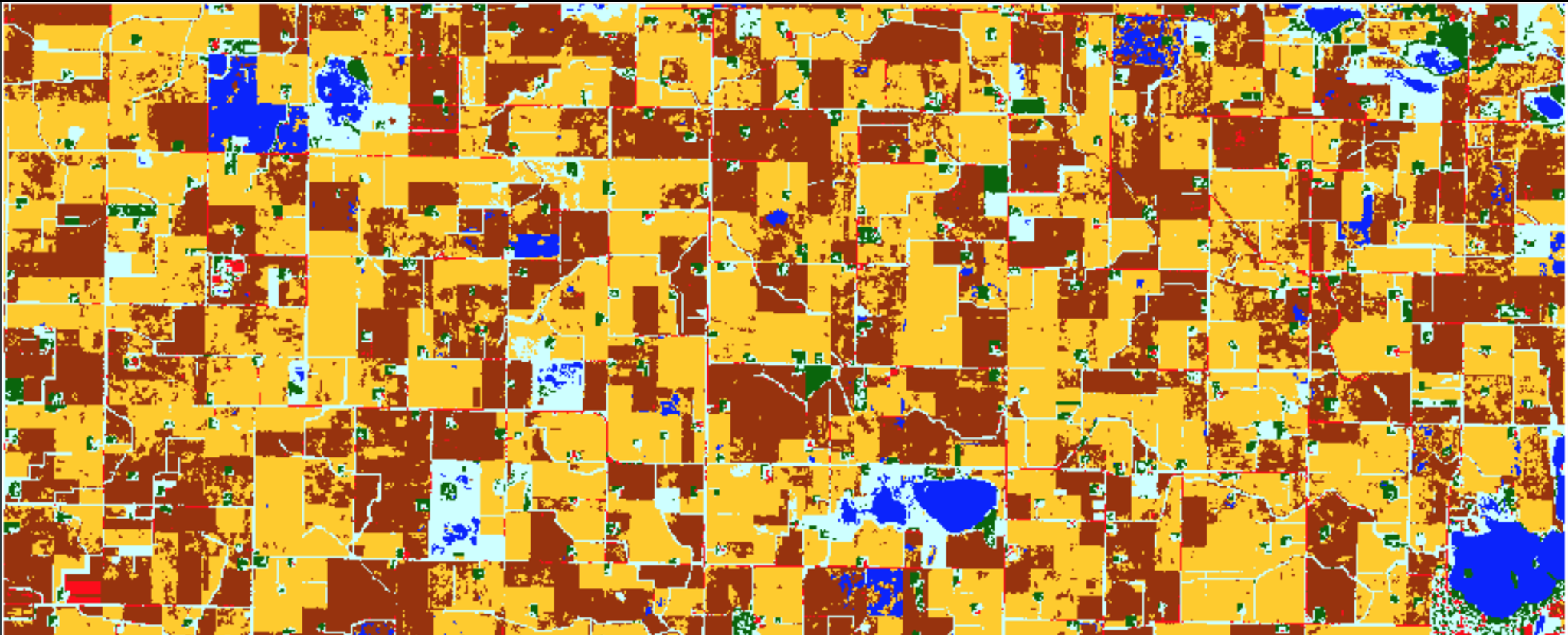
A land cover classification map produced of farmlands in Rolfe, Iowa with corn represented in yellow, soy in brown, water in blue, and infrastructure in red © 2017, Planet Labs Inc. All Rights Reserved.
StoriesNo one likes a spoiler alert – unless it makes or saves them money. When it comes to agriculture, a well-timed spoiler alert about how crops are performing is welcomed by farmers and commodity traders alike. For farmers, the ability to make detailed predictions on crop growth and yields is critical for their business. For commodity traders, it’s like getting insider information on the market. This is particularly valuable at a time when the major commodities traders are facing slimmer margins with the rise of digitization. One way commodity traders make predictions is by measuring crop acreage, or the number of acres planted. This is critical information for estimating yields on a regional and country-wide level. The USDA publishes crop acreage reports annually, but these come at a date late in the growing season. Alternate data sources, like Landsat satellites or drones, to get ahead of the USDA can be too infrequent, low resolution, expensive, or limited in geographic reach. Planet provides traders access to dense, cloud-free satellite data in a time-series for the purpose of identifying crop types early in the season. This allows them to calculate crop acreage across broad regions well ahead of public reports. Traders can then add food crop acreage information into their models to inform yield estimations, price projections, and trading decisions – giving them a competitive edge. Here’s how it’s done. Using the visible and near-infrared sensors on its satellites, Planet can derive a time series of spectral vegetation indices such as the Normalized Difference Vegetation Index (NDVI), which measures the amount and health of the crops. NDVI measurements over time also show crop lifecycle events (ie, start of season, peak vegetative phase, start of senescence), which is helpful for distinguishing different crop types. The graph below compares changes in NDVI of each crop over time in a selection of fields in Rolfe, Iowa, between early June to mid-August 2017.
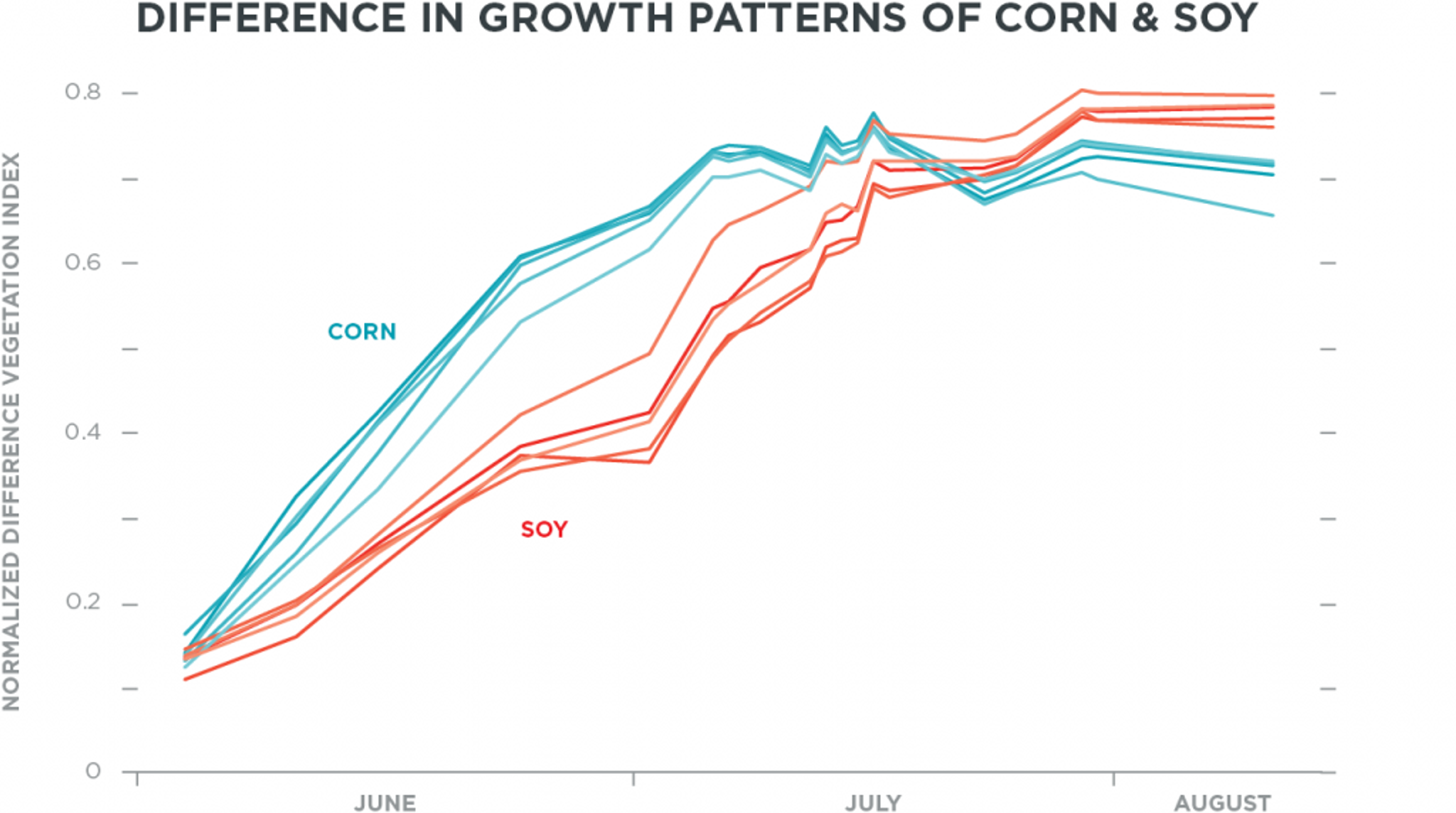
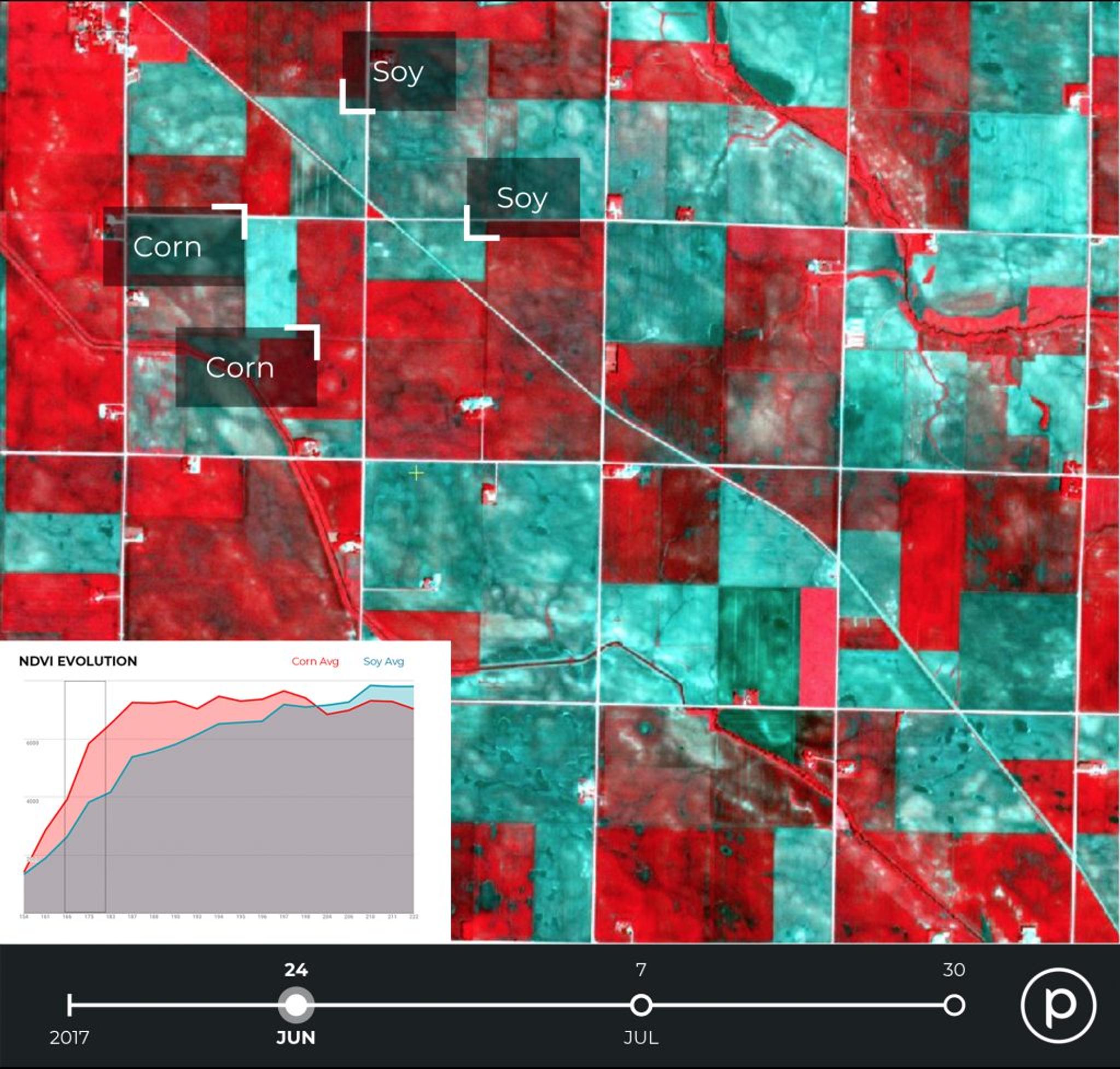

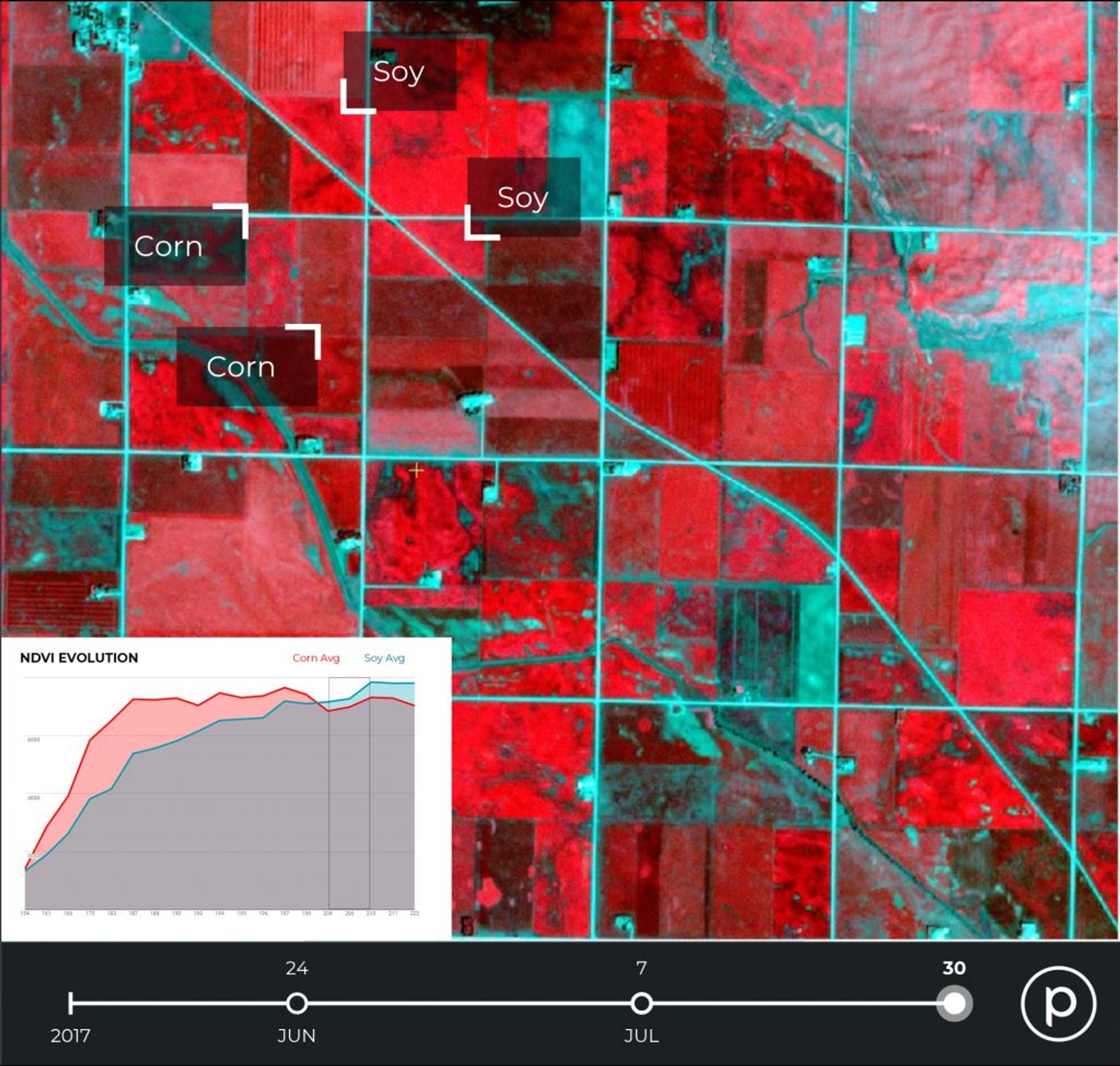
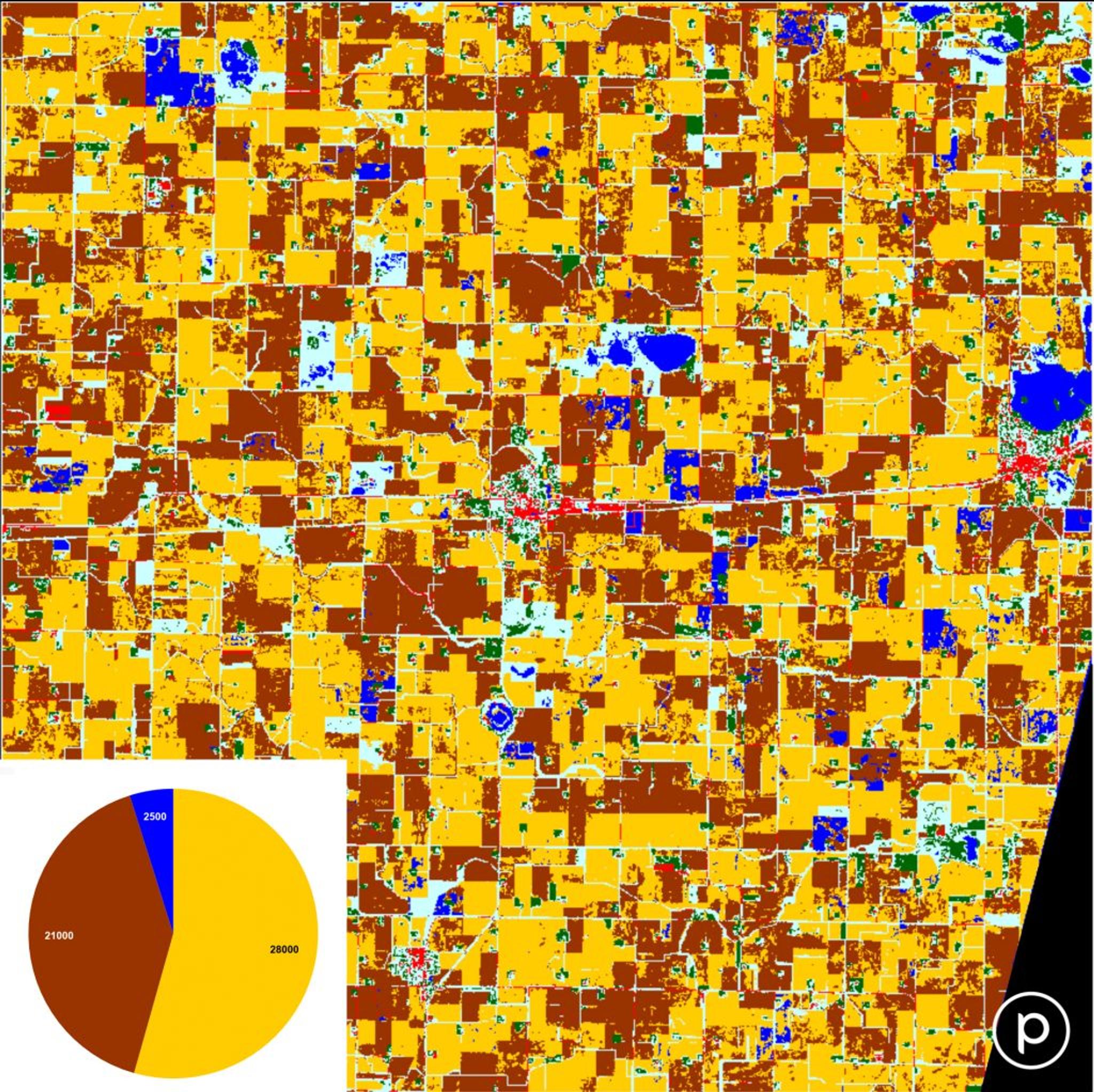

Ready to Get Started
Connect with a member of our Sales team. We'll help you find the right products and pricing for your needs

